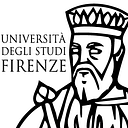Lancashire: a Land of Witches in Shakespeare’s Time
From Firenze University Press Journal: Journal of Early Modern Studies (JEMS)
Luca Baratta, University of Florence
In 1606 the first example of an alleged devilish confederacy made its debut on the London stage with the most famous witches of all: the ‘weird sisters’ in Shakespeare’s Macbeth. Two years before, the new monarch James I, who probably wanted to show severity in matters of public order and religion, had issued a new Witchcraft Act (1 Jac. I, c.12), which decreed death for those who ‘take up any dead man, woman, or child out of his, her, or their grave, or any other place where the dead body resteth — or the skin, bone, or any other part of any dead person — to be employed or used in any manner of witchcraft, sorcery, charm, or enchantment’ (Luders et al., IV, pt. II, 1028).
As a consequence of this, in 1612 Lancashire became the scene of an extraordinary witch trial: after several months of imprisonment, seventeen women and two men, all coming from the small county of the Forest of Pendle, were tried for witchcraft and ten of them were sent to the scaffold in Lancaster. Echo of the events was thorough. It had been a large trial and, although the numbers involved did not exceed those of any previous judicial proceeding, it had attracted to Lancaster castle enormous crowds, drawn no doubt by the ghoulish prospect of seeing so many witches choking to death on the gallows. ‘No episode in the history of superstition in England, gained such wide fame’ (Notestein 1911, 121).
Witch-hunting in England, but not only, is today among the most written about, yet most indefinable, of historical topics. Even before the last alleged witches were burnt (as far as we know, the last legal execution was carried out at Glarus in Switzerland in 1782), educated Europeans were trying to explain what a well-known Italian scholar, Raoul Manselli, has rightly defined ‘the shame of Western Christianity’ (1975, 39). This intellectual quest has continued unchanged over the centuries, but only recently the phenomenon has shown all its complexity and multifaceted variety.
Starting from a perspective which is both political and religious, I will briefly discuss sixteenth- and seventeenth-century Lancashire, whose particular social conditions made it appear as a land of dissidents and non-conformists; I will then concentrate on the trial which was held in the region only a few years after the act on magic and witchcraft was passed. In so doing, I will try to tease out relations with the Gunpowder Plot of 1605 to which the activities of the Lancashire witches were compared by Thomas Potts, the trial’s chronicler, and whose conspiratorial connections reached into Lancashire, in the attempt to show how the families of the local gentry were implicated in the underworld of persecuted Catholicism and to suggest that their mostly Protestant Jacobean descendants sought to demonstrate their loyalty to the state by seeking out witches.
The final purpose of my article is to look at what Potts’ 1613 witchcraft pamphlet, The Wonderfull Discoverie of Witches in the Countie of Lancaster, can tell us about the importance of the connection between fiction and reality in early modern popular culture. I will not take into account just the content of the story of the Lancashire witches, but also the way in which their vicissitudes have been transmitted to us, by whom and why, and whether that process can give us access to the actual personalities and events of the time. And with respect to the particular aspect of the correlation between facts and fiction Shakespeare’s Macbeth comes to the foreground. It was in fact after the tragedy was performed for the courtiers and lawyers at Hampton Court that the full repertoire of the black mass was witnessed in England, complete with those macabre elements — infanticide, cannibalism, necromancy, and anthropophagy — which had for so long characterized the continental demonological theory.
DOI: https://doi.org/10.13128/JEMS-2279-7149-12635
Read Full Text: https://oajournals.fupress.net/index.php/bsfm-jems/article/view/7003
